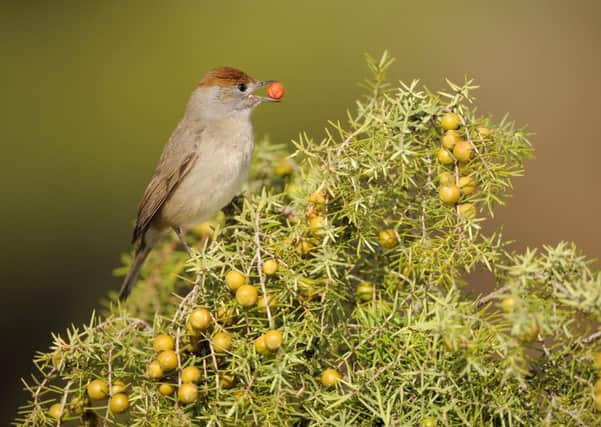Woodland birds soar in Scotland


New official statistics from Scottish Natural Heritage (SNH) show numbers have jumped by 68 per cent overall since 1994.
The report, which documents abundance of the country’s 66 terrestrial breeding bird species, found farmland birds have also been faring well, with numbers growing by 22 per cent.
However, the surveys have revealed mixed fortunes.
Advertisement
Hide AdAdvertisement
Hide AdUpland birds have experienced a 14 per cent decline over the 21-year period.
Some woodland species have been doing particularly well, such as chiffchaffs, which have increased by a massive 752 per cent, and great spotted woodpeckers, whose numbers have soared by 530 per cent.
Experts say there are a variety of reasons for the population fluctuations.
Changes in how forests are managed may be starting to help woodland species, while the effects of climate change are also having an impact.
Improved conditions in wintering areas have benefitted chiffchaffs, while willow warblers and tree pipits are doing much better in Scotland than further south.
Willow warblers have increased by 46 per cent, with tree pipits up 86 per cent.
Farmland birds also increased overall, with long-term gains in species such as goldfinch, great tit, magpie, corncrake and whitethroat.
Declines continue among waders, with most species displaying declines of at least 20 per cent in the past 21 years.
Advertisement
Hide AdAdvertisement
Hide AdSnipes are the only wader that is showing an upswing in numbers.
Lapwings have dropped by a worrying 53 per cent and oystercatchers by 40 per cent.
Kestrels numbers increased in the past year, but overall show a continuing rate of decline greater than for any other farmland bird.
But the worst picture is for upland birds as whole, which are experiencing a long-term downturn. However, there are a few exceptions.
A recent survey of golden eagles showed numbers have leaped by almost a fifth, while cuckoos in the Scottish uplands are bucking the UK-wide decline with an increase of 129 per cent.
Ravens numbers have also gone up, doubling since 1994, while red grouse saw a large increase for the second consecutive year to reach their highest levels in 16 years.
Across all habitats, counts show blackcaps numbers grew fourfold, goldfinches more than doubled and swift numbers halved.
Ornithologists are encouraging Scots to put food out and create suitable habitat for local birds to help boost their chances of survival.
Advertisement
Hide AdAdvertisement
Hide AdSimon Foster, trends analyst for SNH, said: “You can help some of Scotland’s bird species by feeding them, particularly in the winter months.
“This has helped birds such as goldfinch and blackcap, which have seen large increases and can be seen in gardens throughout Scotland.
“On the other hand, swift populations have continued to decline, so you could help this migrant out by providing nesting sites.”